Advertisements
Chapters
![NCERT solutions for Mathematics [English] Class 7 chapter 13 - Visualising Solid Shapes NCERT solutions for Mathematics [English] Class 7 chapter 13 - Visualising Solid Shapes - Shaalaa.com](/images/mathematics-english-class-7_6:c3cebe068a194d94b26c11e5078e5928.jpg)
Advertisements
Solutions for Chapter 13: Visualising Solid Shapes
Below listed, you can find solutions for Chapter 13 of CBSE NCERT for Mathematics [English] Class 7.
NCERT solutions for Mathematics [English] Class 7 13 Visualising Solid Shapes EXERCISE 13.1 [Pages 202 - 203]
Identify the net which can be used to make cube (cut out copies of the net and try it):

Identify the net which can be used to make cube (cut out copies of the net and try it):

Identify the net which can be used to make cube (cut out copies of the net and try it):
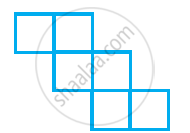
Identify the net which can be used to make cube (cut out copies of the net and try it):
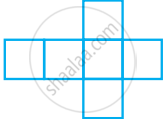
Identify the net which can be used to make cube (cut out copies of the net and try it):
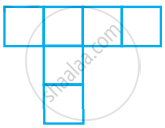
Identify the net which can be used to make cube (cut out copies of the net and try it):

Dice are cubes with dots on each face. Opposite faces of a die always have a total of seven dots on them.
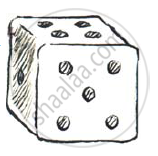
Here are two nets to make dice (cubes); the numbers inserted in each square indicate the number of dots in that box.

Insert suitable numbers in the blanks, remembering that the number on the
opposite faces should total to 7.
Can this be a net for a die?
Explain you answer.
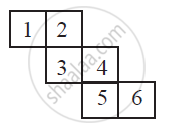
Here is an incomplete net for making a cube. Complete it in at least two different ways. Remember that a cube has six faces. How many are there in the net here? (Give two separate diagrams. If you like, you may use a squared sheet for easy manipulation.)
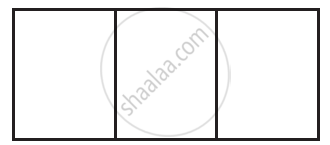
Match the nets with appropriate solids:
| (a) | 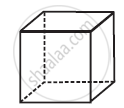 |
(i) | 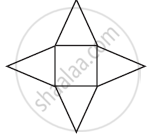 |
| (b) |  |
(ii) | 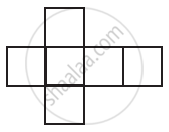 |
| (c) |  |
(iii) |  |
| (d) |  |
(iv) | 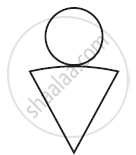 |
NCERT solutions for Mathematics [English] Class 7 13 Visualising Solid Shapes EXERCISE 13.2 [Pages 206 - 207]
Use isometric dot paper and make an isometric sketch for the given shape:
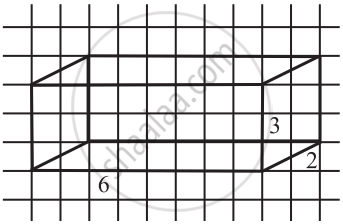
Use isometric dot paper and make an isometric sketch of the given shape:

Use isometric dot paper and make an isometric sketch of the given shape:

Use isometric dot paper and make an isometric sketch of the given shape:
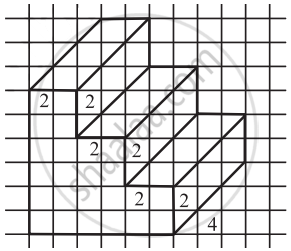
The dimensions of a cuboid are 5 cm, 3 cm and 2 cm. Draw three different isometric sketches of this cuboid.
Three cubes each with 2 cm edge are placed side by side to form a cuboid. Sketch an oblique or isometric sketch of this cuboid.
Make an oblique sketch of the given isometric shape:
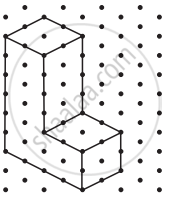
Make an oblique sketch of the given isometric shape:
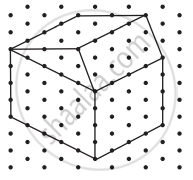
Give an oblique sketch of the following:
A cuboid of dimensions 5 cm, 3 cm and 2 cm. (Is your sketch unique?)
Give an oblique sketch of the following:
A cube with an edge 4 cm long.
Give an isometric sketch for the following:
A cuboid of dimensions 5 cm, 3 cm and 2 cm. (Is your sketch unique?)
Give an isometric sketch for the following:
A cube with an edge 4 cm long.
NCERT solutions for Mathematics [English] Class 7 13 Visualising Solid Shapes EXERCISE 13.3 [Page 209]
What cross-sections do you get when you give a vertical cut and horizontal cut to the given solids a brick.
What cross-sections do you get when you give a vertical cut and horizontal cut to the given solid a round apple.
What cross-sections do you get when you give a vertical cut and horizontal cut to the given solid a die.
What cross-sections do you get when you give a vertical cut and horizontal cut to the given solid a circular pipe.
What cross-sections do you get when you give a vertical cut and horizontal cut to the given solid a ice cream cone.
NCERT solutions for Mathematics [English] Class 7 13 Visualising Solid Shapes EXERCISE 13.4 [Pages 210 - 211]
A bulb is kept burning just right above the following solid. Name the shape of the shadow obtained in case. Attempt to give a rough sketch of the shadow. (You may try to experiment first and then answer these question).

A ball
A bulb is kept burning just right above the following solid. Name the shape of the shadow obtained in case. Attempt to give a rough sketch of the shadow. (You may try to experiment first and then answer these question).
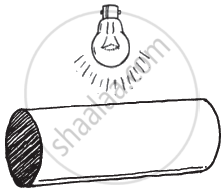
A cylindrical pipe
A bulb is kept burning just right above the following solid. Name the shape of the shadow obtained in case. Attempt to give a rough sketch of the shadow. (You may try to experiment first and then answer these question).
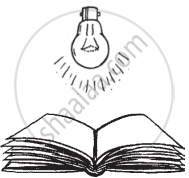
A book
Here are the shadow of some 3-D object, when seen under the lamp of an overhead projector. Identify the solid(s) that match shadow. (There may be multiple answer for these!)
A circle
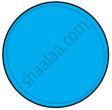
Here are the shadow of some 3-D object, when seen under the lamp of an overhead projector. Identify the solid(s) that match shadow. (There may be multiple answer for these!)
A square
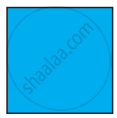
Here are the shadow of some 3-D object, when seen under the lamp of an overhead projector. Identify the solid(s) that match shadow. (There may be multiple answer for these!)
A triangle
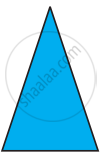
Here are the shadow of some 3-D object, when seen under the lamp of an overhead projector. Identify the solid (s) that match shadow. (There may be multiple answer for these!)
A rectangle
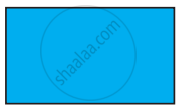
Examine if the following is true statement:
The cube can cast a shadow in the shape of a rectangle.
True
False
Examine if the following is true statement:
The cube can cast a shadow in the shape of a hexagon.
True
False
Solutions for 13: Visualising Solid Shapes
![NCERT solutions for Mathematics [English] Class 7 chapter 13 - Visualising Solid Shapes NCERT solutions for Mathematics [English] Class 7 chapter 13 - Visualising Solid Shapes - Shaalaa.com](/images/mathematics-english-class-7_6:c3cebe068a194d94b26c11e5078e5928.jpg)
NCERT solutions for Mathematics [English] Class 7 chapter 13 - Visualising Solid Shapes
Shaalaa.com has the CBSE Mathematics Mathematics [English] Class 7 CBSE solutions in a manner that help students grasp basic concepts better and faster. The detailed, step-by-step solutions will help you understand the concepts better and clarify any confusion. NCERT solutions for Mathematics Mathematics [English] Class 7 CBSE 13 (Visualising Solid Shapes) include all questions with answers and detailed explanations. This will clear students' doubts about questions and improve their application skills while preparing for board exams.
Further, we at Shaalaa.com provide such solutions so students can prepare for written exams. NCERT textbook solutions can be a core help for self-study and provide excellent self-help guidance for students.
Concepts covered in Mathematics [English] Class 7 chapter 13 Visualising Solid Shapes are Plane Figures and Solid Shapes, Nets for Building 3-d Shapes, Drawing Solids on a Flat Surface - Oblique Sketches, Drawing Solids on a Flat Surface - Isometric Sketches, Visualising Solid Objects, Viewing Different Sections of a Solid, Faces, Edges and Vertices, Plane Figures and Solid Shapes, Nets for Building 3-d Shapes, Drawing Solids on a Flat Surface - Oblique Sketches, Drawing Solids on a Flat Surface - Isometric Sketches, Visualising Solid Objects, Viewing Different Sections of a Solid, Faces, Edges and Vertices.
Using NCERT Mathematics [English] Class 7 solutions Visualising Solid Shapes exercise by students is an easy way to prepare for the exams, as they involve solutions arranged chapter-wise and also page-wise. The questions involved in NCERT Solutions are essential questions that can be asked in the final exam. Maximum CBSE Mathematics [English] Class 7 students prefer NCERT Textbook Solutions to score more in exams.
Get the free view of Chapter 13, Visualising Solid Shapes Mathematics [English] Class 7 additional questions for Mathematics Mathematics [English] Class 7 CBSE, and you can use Shaalaa.com to keep it handy for your exam preparation.
